
TARGET 161102
THE WORLD'S LARGEST MUSICAL INSTRUMENT
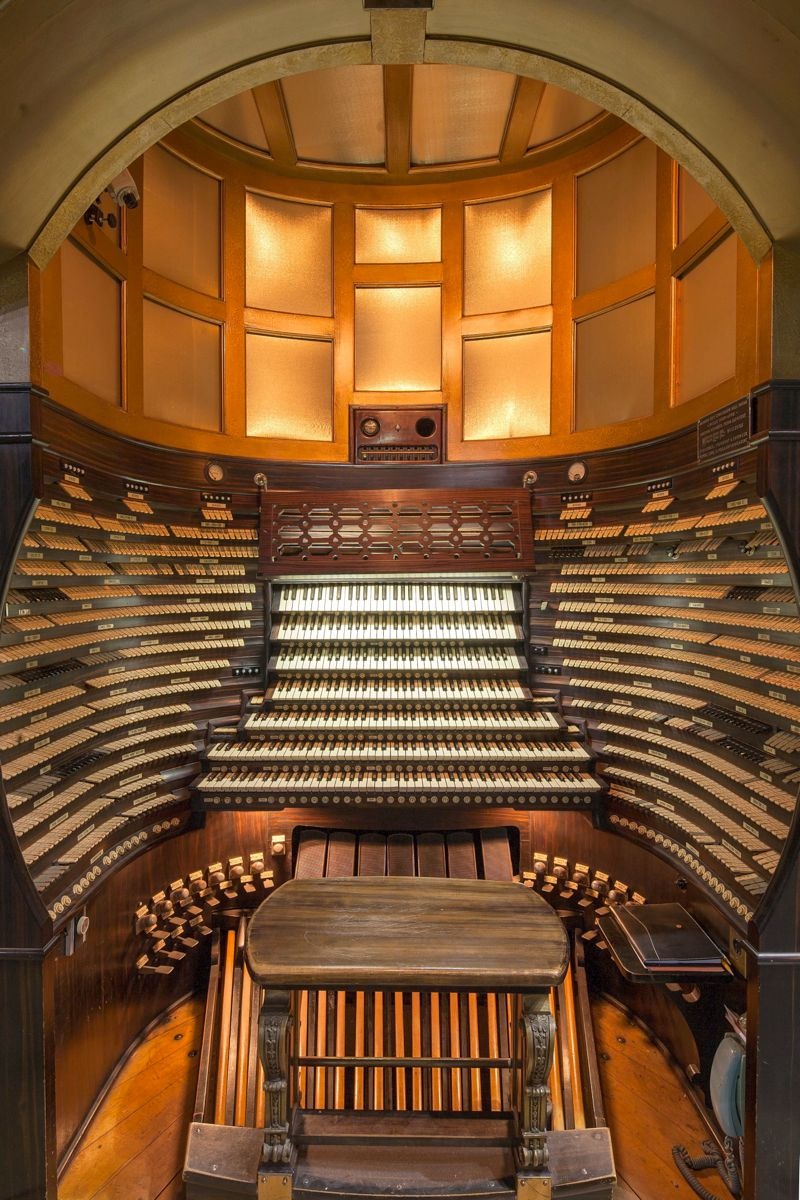
The world's largest pipe organ is in the historic Boardwalk Hall in Atlantic City, New Jersey. It is so large that it had to be built inside the building as the Hall was being constructed, rather than being built somewhere else and installed there.
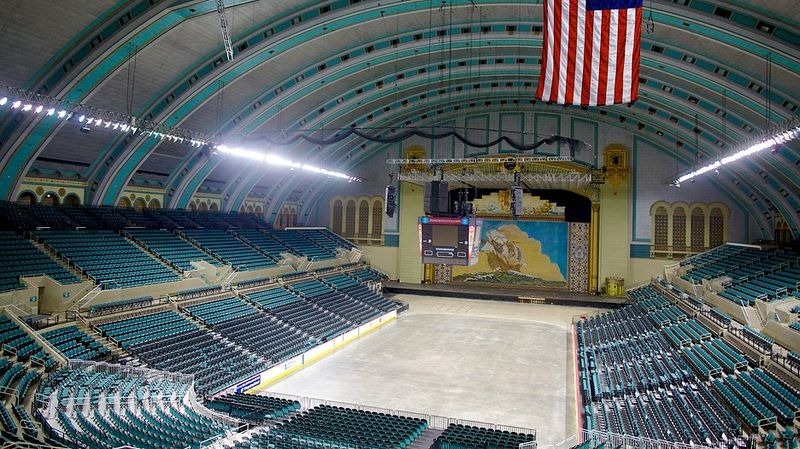
At the time the building was constructed, organs were provided as standard stage equipment for any entertainment facility, especially to accompany motion pictures because the technology for sound film had not arrived yet. In those times, an average theater could accommodate 2,000 to 3,000 people. But Boardwalk Hallís original seating capacity was 42,000. The enclosed space was almost 5,500,000 cubic feet (160,000 m3). To fill this immense volume of air with music represented an immense engineering and musical challenge.
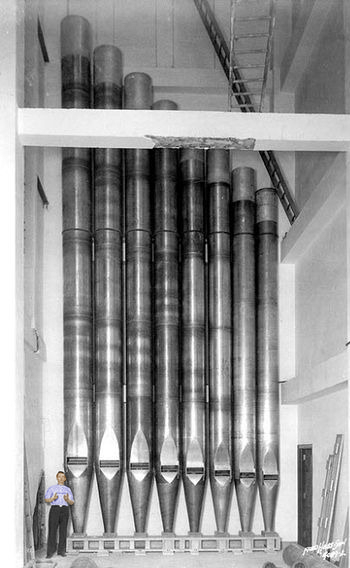
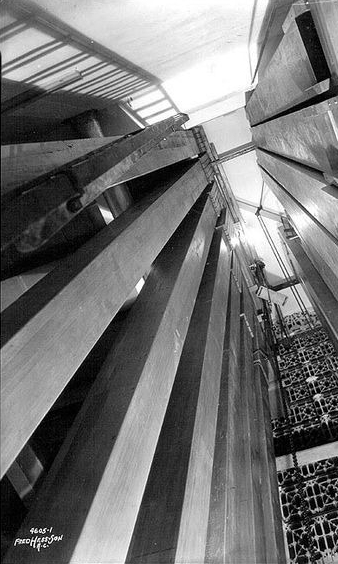
The task of building the organ was given to Midmer-Losh Inc. of Merrick, Long Island, New York. What resulted was a giant of an instrument, the largest ever made since the first pipe organ was invented, two thousand five hundred years before. The tallest pipe (providing the lowest note) stands 64 feet (19.5 meters) tall.
Made with a staggering 33,000 pipes, this mammoth instrument can thunder into the 5.5 million cubic feet of air space in the main arena with a volume six times that of the loudest train whistle. To generate such ear-splitting sound, the organ utilizes 600 horsepower electric blowers that are capable of blowing 36,400 cubic feet of air per minute through the pipes, generating wind pressure up to 100 inches, or about 30 times that of a normal organ.
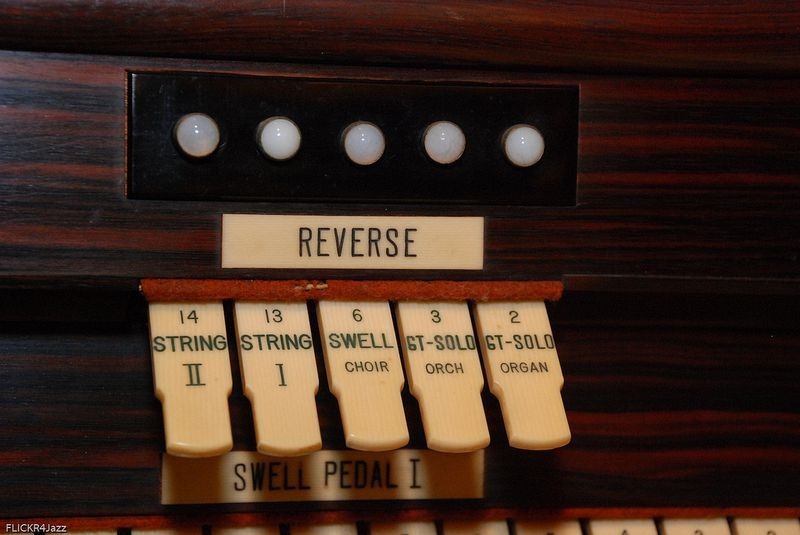
One of the features that separates organs from other instruments is that it can mimic the sounds of other instruments. It can sound like a stringed instrument (guitar, violin, bass, etc.) wind instruments (flute, oboe, saxiphone, etc.), drums, reed instruments, etc. The sound it makes whenever a key is pressed is determined by which "tab" is pushed into the downward position.
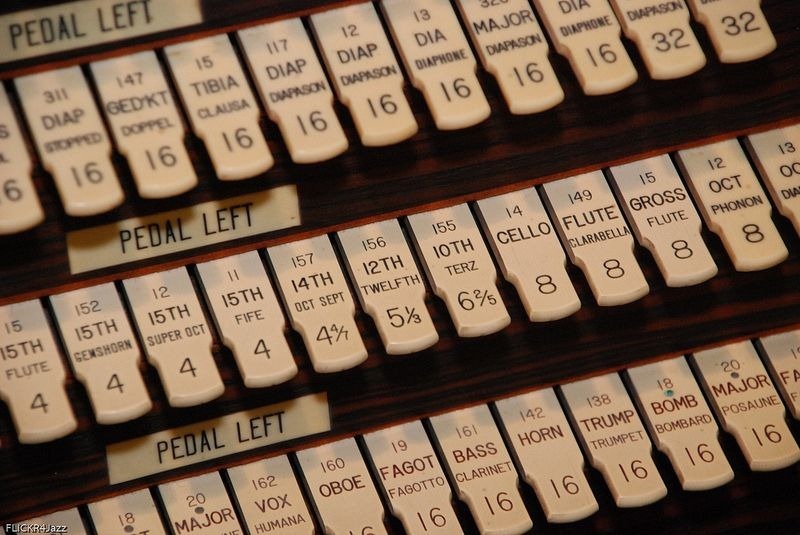
A normal organ will have from 10 to 100 tabs. The Boardwalk Hall organ has a few more.
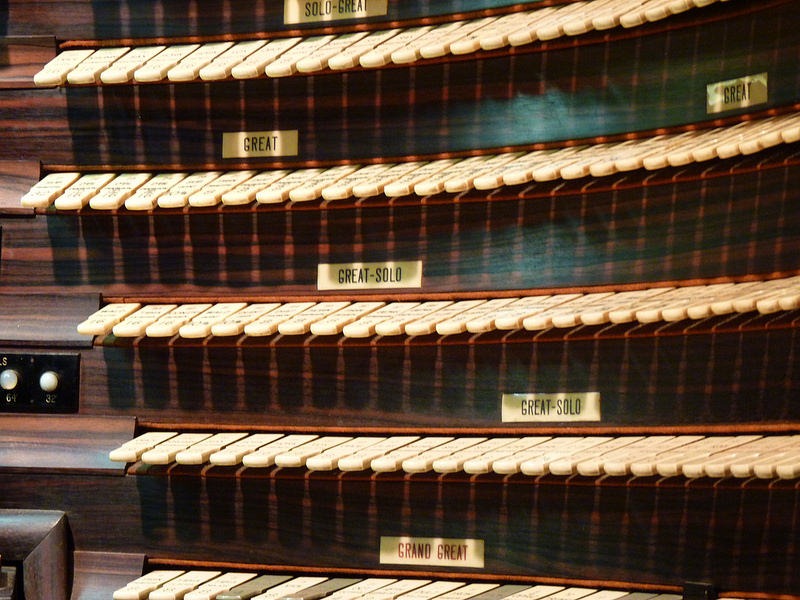
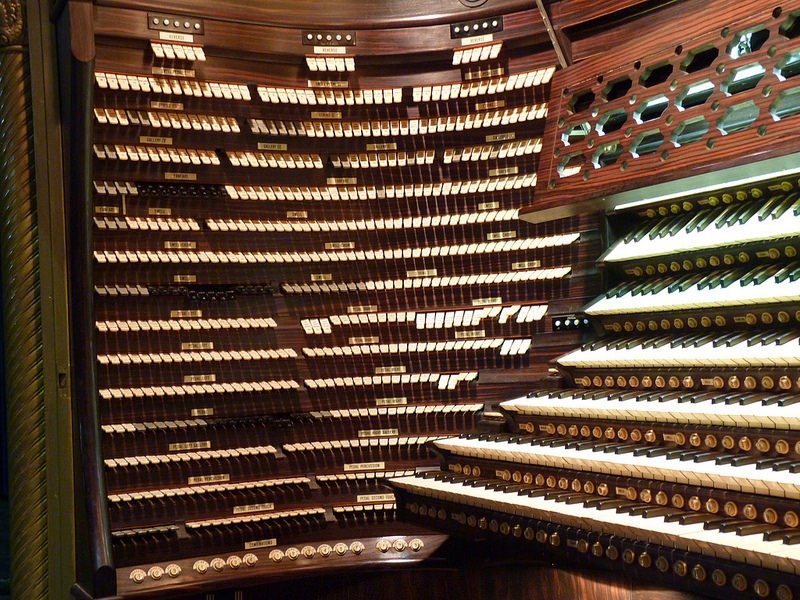
In fact, it has 1,235 of them.
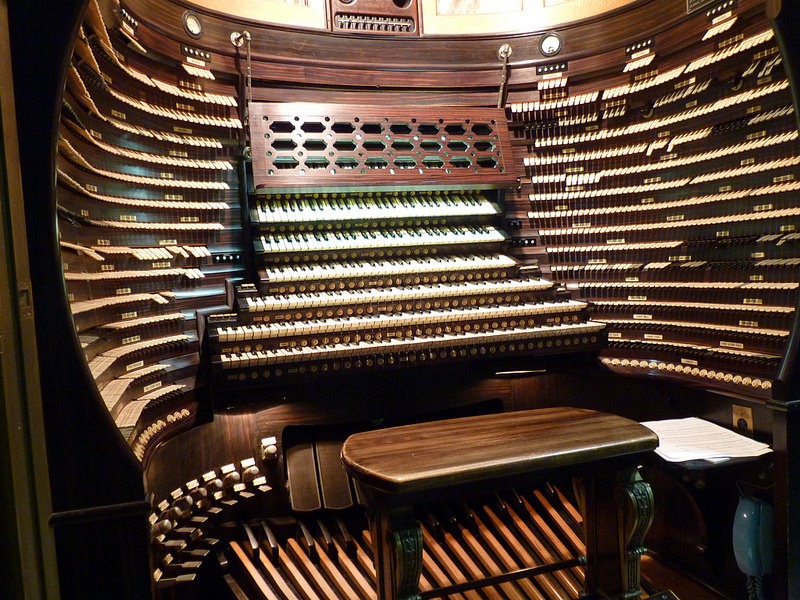
When the organist wants a particular sound, he/she must know how to quickly reach up to the correct side, flip the tabs for the previous sound up and flip the sounds for the new sound he/she wants to the downward position, all without interrupting the music being played.
Added to that, the organ has 7 "manuals" (keyboards), (the top one is hidden in the picture above) for the hands and 1 for the feet (the footpedals). Each manual can be set for a different instrument sound so the organist can mimic the sound of 3 different instruments being played together.
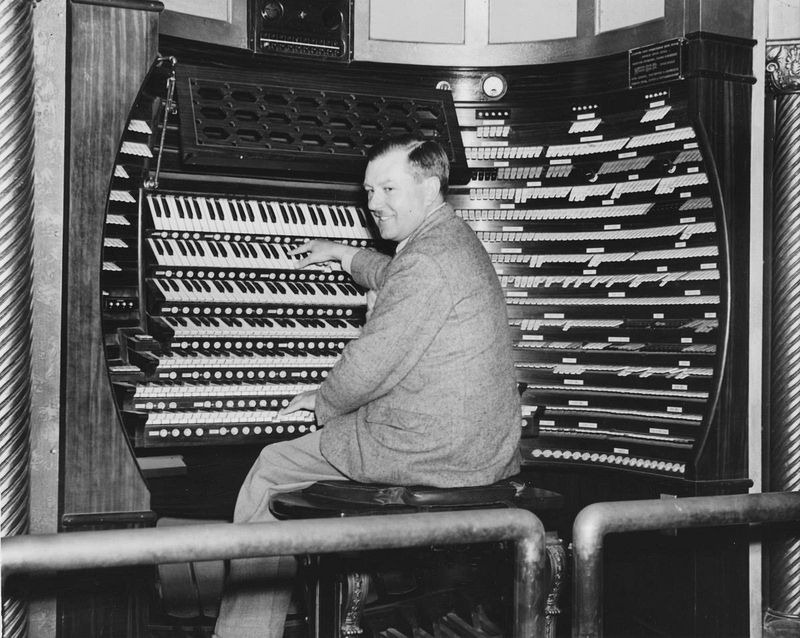
British Organist Reginald Foort at the console. Photo credit: organsociety.org
As you have realized by now, it takes a life of full dedication and practice, practice, practice to be the organist at Boardwalk Hall. (And we complain about having to practice remote viewing?)
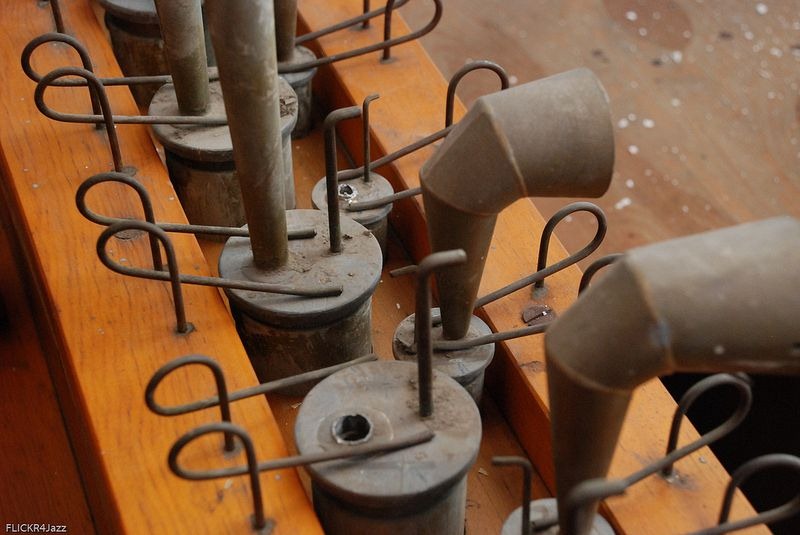
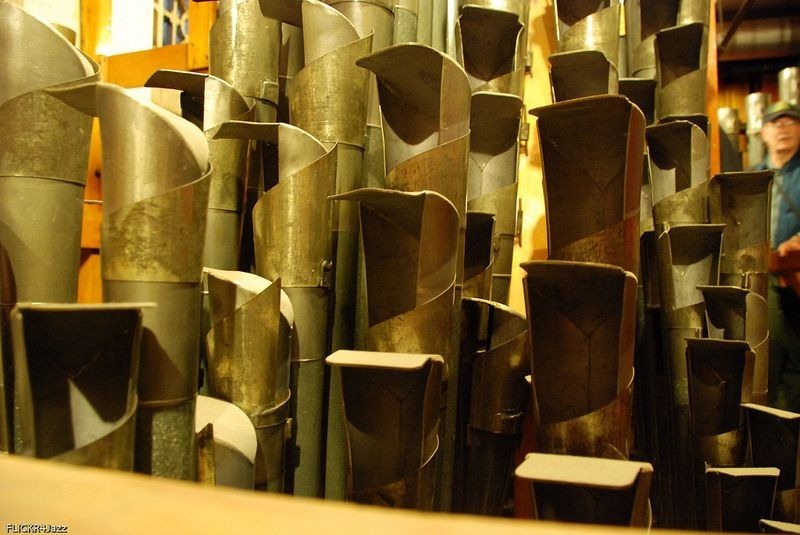

Although the instrument has not been fully functional since it was damaged by the 1944 Great Atlantic Hurricane, the 15-20% that has recently become operational has begun to be heard for the first time publicly in many decades. The organ was played in September 2013 during the Miss America pageant, its first public performance in 40 years. Since May 2014, free half-hour noon concerts followed by free half-hour tours are offered Monday through Friday from May through October, excluding holidays. As of May 2015, in-depth "behind the scenes" tours are available weekly on Wednesdays at 10 a.m. throughout the year.
FEEDBACK MAP

If you got impressions for which this feedback is insufficient, more information,
pictures and videos can be found at the following web sites:
Amusing Planet website
Wikipedia
BoardwalkHall.com (for visiting schedules and information)
Demonstration video (8 minutes 43 seconds)
Photo credits: organsociety.org, Expedia, Michael/Flickr and Jazz Guy/Flickr